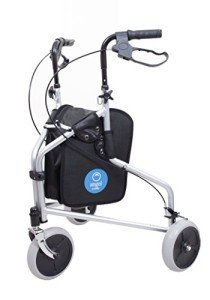Rollators are an indispensable mobility aid that boosts the liberty and self-reliance of those with minimal walking abilities. They are designed not just to offer stability and assistance however likewise to motivate mobility and engagement in daily activities for people of all ages. This post delves deep into the world of rollators, supplying insights into their functions, benefits, types, maintenance, and crucial considerations when picking the most suitable model.

A rollator is a mobile walking aid geared up with four wheels, handgrips, a seat, and often includes extra features such as storage baskets and brakes. Unlike conventional walkers, which need the user to lift them off the ground, rollators can be pushed along as the user strolls, making them particularly beneficial for individuals with restricted strength or balance.
Rollators include a number of features that enhance their functionality:
Utilizing a rollator provides various advantages, particularly for seniors and individuals with mobility difficulties. These might include:
When considering which rollator to select, it's crucial to acknowledge the different types offered. The primary classifications consist of:
| Type of Rollator | Description | Best For |
|---|---|---|
| Standard Rollator | Four wheels, seat, numerous alternatives. | General use, indoor and outdoor. |
| Heavy-Duty Rollator | Strengthened for greater weight capability. | Larger individuals needing extra assistance. |
| Three-Wheel Rollator | Compact and Lightweight 4-Wheel Walker with Seat for Comfort, easy to maneuver. | Limited space and indoor use. |
| Foldable Rollator For Walking | Collapsible for easy transportation. | Frequent travelers or caregivers. |
Choosing the ideal rollator involves considering numerous factors to satisfy the individual's particular needs:
To prolong the life expectancy and functionality of a rollator, routine maintenance is essential. Here are some helpful tips:
Yes, many rollators are created with larger wheels or specialized treads to handle unequal surface areas. However, users should exercise care and ensure they feel stable when browsing such surfaces.
When standing straight, the deals with of the rollator ought to align with the user's wrist when their arms are relaxed at their sides. This position makes sure comfortable use.
No, rollators can be purchased without a prescription. Nevertheless, speaking with a healthcare professional can be beneficial to identify the very best alternative based upon private requirements.
Protection for rollators can vary based upon the kind of insurance plan. Numerous Medicare plans provide coverage for some kinds of walkers, including rollators. It's recommended to consult the insurance coverage company directly.
Rollators for walking considerably boost the lives of lots of individuals dealing with mobility challenges. Supplying stability, self-reliance, and ease of motion, they act as essential tools for preserving an active way of life. Understanding the different types, functions, and how to keep them in great condition can empower users in making informed decisions. As mobility requirements differ significantly from person to individual, it is important to pick a rollator that best satisfies individual requirements and improves quality of life.
No Data Found!

